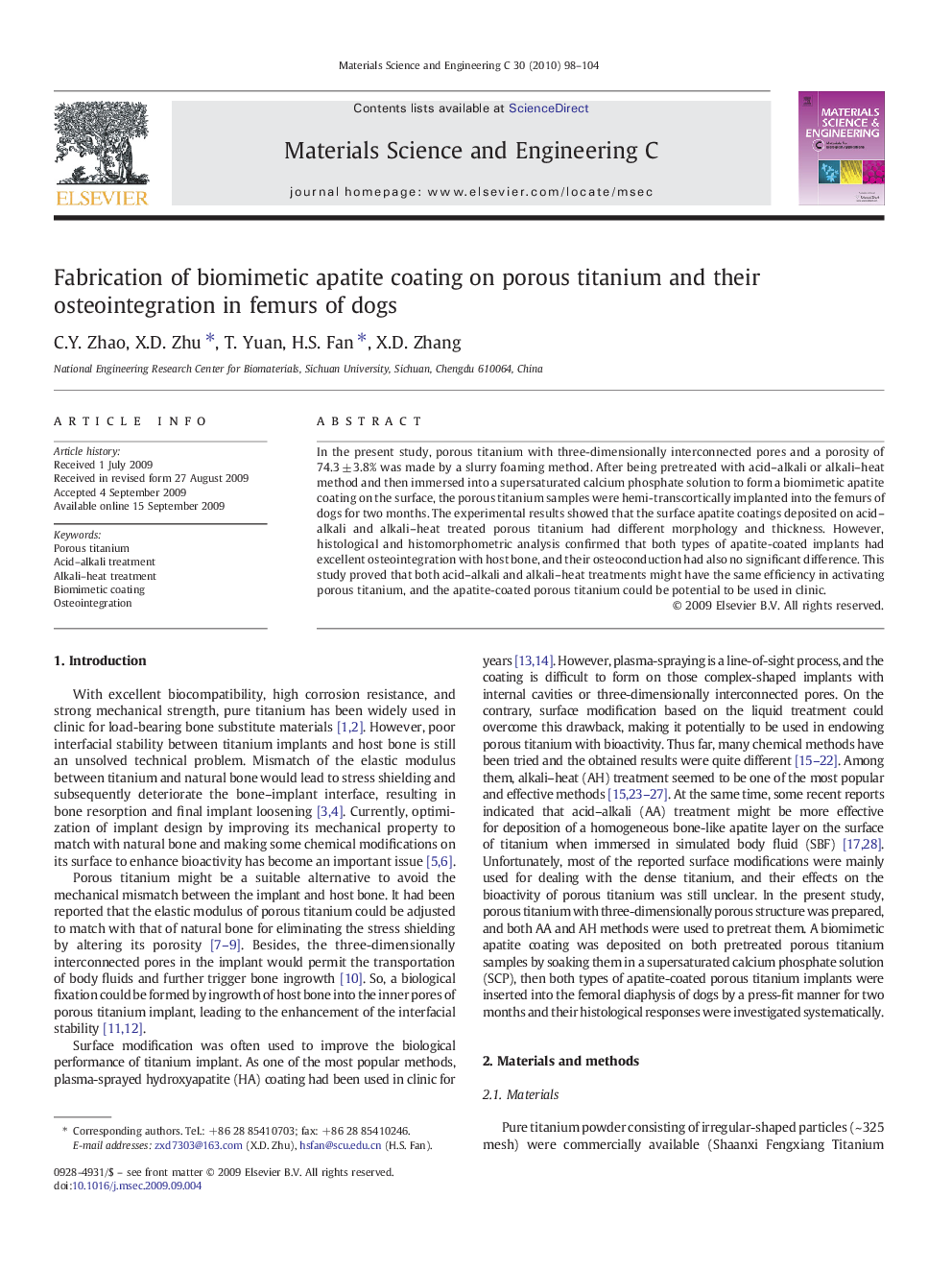| Article ID | Journal | Published Year | Pages | File Type |
|---|---|---|---|---|
| 1430098 | Materials Science and Engineering: C | 2010 | 7 Pages |
In the present study, porous titanium with three-dimensionally interconnected pores and a porosity of 74.3 ± 3.8% was made by a slurry foaming method. After being pretreated with acid–alkali or alkali–heat method and then immersed into a supersaturated calcium phosphate solution to form a biomimetic apatite coating on the surface, the porous titanium samples were hemi-transcortically implanted into the femurs of dogs for two months. The experimental results showed that the surface apatite coatings deposited on acid–alkali and alkali–heat treated porous titanium had different morphology and thickness. However, histological and histomorphometric analysis confirmed that both types of apatite-coated implants had excellent osteointegration with host bone, and their osteoconduction had also no significant difference. This study proved that both acid–alkali and alkali–heat treatments might have the same efficiency in activating porous titanium, and the apatite-coated porous titanium could be potential to be used in clinic.
